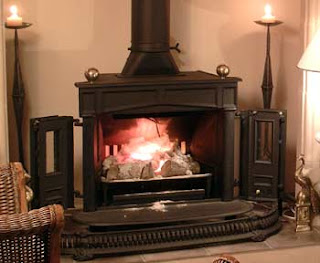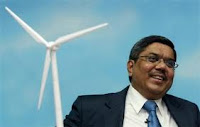Although Jugaad is practiced in India, it was once a big
part of Western innovation too. Among the many early American jugaad
innovators, the best known was Benjamin Franklin. Born in Boston,
Massachusetts, USA, in 1706 had left his school when he was 10 to work in his
father’s soap and candle factory. Early on, Franklin developed a knack for
using limited resources to devise ingenious and frugal solutions to tackle
everyday problems.
Franklin’s one of the most practical inventions was the
Franklin Stove. During the 18th century, homes in the US were
primarily heated by inefficient fireplaces that spewed smoke as much of the
heat they generated escaped up the chimney. This was also dangerous as the
sparks could easily trigger fires to the wood build homes.
Franklin’s jugaad innovation was a new type of stove with a
simple hooded enclosure in the front and an air box in the rear. The new stove
and its reconfiguration of the flues enabled a more efficient fire. It consumed
75% less wood and generated twice as much heat.
Franklin wanted to serve his country with his inventions. He
turned down the patent offered for his original design and wanted his designed
to be copied by everyone. In fact he patented none of his other Jugaad
inventions. He wrote in his autobiography “as we enjoy great advantages from
the inventions of others, we should be glad of an opportunity to serve others
by an invention of ours and this we should do freely and generously.”
The Non Jugaad Approch (Structured Approch)
Although the Fathers of America had the Jugaad approach, the
later America believed in more structured method of inventing. Major companies had
a separate R&D department and separate budgets were allotted to them only
to invent. But this approach lacked flexibility. This approach is designed to
deliver “more with more” unlike the Jugaad approach of delivering “more with
less”.
From the beginning of 20th century, western firms
have built large R&D departments that employ hundreds of engineers and
scientists. Only a selected few were allowed into these R&D departments.
The secrecy became uttermost priority. The researchers were not allowed to interact
with the other staff as well to reduce the chances of leakage of information. The
assumption was that to determine markets through innovation one needed two
things: top of the line technology and ownership of the best intellectual
property.
Western firms spent a whopping $550,000,000,000 (Rs. 27.5
lakh crore) on R&D in 2010 alone. What was the return? Nothing much
compared to the amount of money spent. These costs were eventually added to the
final product that was offered to the customers, increasing the selling price
for a product that was not actually reinvented.





Comments
Post a Comment